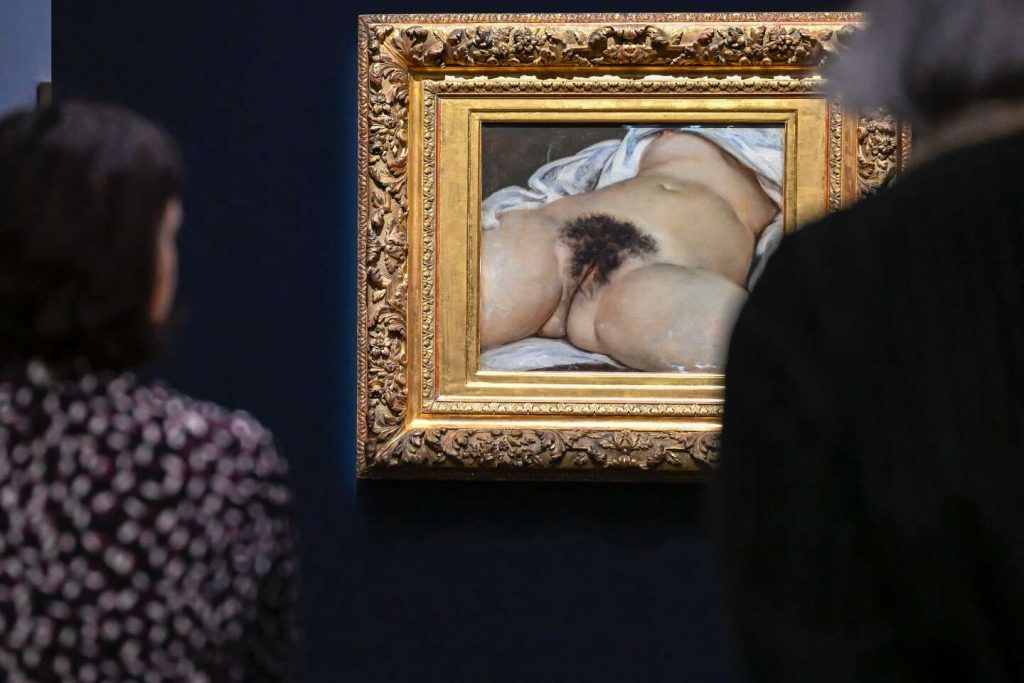Two women were charged on Tuesday, May 7, after defacing five artworks exhibited at the Centre Pompidou-Metz, including Gustave Courbet’s famous nude painting “L’Origine du monde,” as reported by Agence France-Presse (AFP) from the prosecutor’s office in Metz. The women, born in 1986 and 1993, were charged with vandalism and theft of cultural property. They were placed under judicial control with a ban on leaving the Moselle department and contact between them. One of the artworks may have been damaged, as they were not all protected, but “L’Origine du monde” was behind glass for protection.
A video released by Franco-Luxembourgish performance artist Deborah De Robertis showed a woman tagging the famous Courbet painting with red paint and another painting. They were seen chanting “MeToo” with paint bombs in hand before being escorted out by security. Another person, not apprehended, may have been involved in the theft of a work by Annette Messager, a red fabric embroidery called “Je pense donc je suce” (1991). De Robertis claimed to be reclaiming the stolen work from the personal collection of an art critic, also the curator of the exhibition “Lacan, quand l’art rencontre la psychanalase” at the Centre Pompidou-Metz.
Deborah De Robertis also has a photo named “Miroir de l’Origine du monde” displayed near “L’Origine du monde” as part of the Jacques Lacan exhibition at the Centre Pompidou-Metz. In this photo, she is posing nude under Courbet’s work. De Robertis was fined for being nude at the Lourdes grotto in 2018 and acquitted for similar actions, including showing her genitals in front of the Mona Lisa at the Louvre in 2017. “L’Origine du monde” is one of the most famous paintings of the 19th century and was mostly known to art historians and experts before being given to the state after Jacques Lacan’s death in 1981 and subsequently acquired by the Musée d’Orsay in 1995.
Created in 1866 for Khalil Bey, a Turkish-Egyptian diplomat and collector of erotic paintings, “L’Origine du monde” had multiple owners before joining the Musée d’Orsay collections. The identity of the model, Constance Queniaux, a dancer, was discovered in 2018 after being anonymous for over 150 years. The painting has a controversial history, and its recent vandalism highlights ongoing debates surrounding censorship, ownership, and the representation of women in art.
The incident at the Centre Pompidou-Metz brings attention to the intersection of art, feminism, and activism, with De Robertis claiming her actions were a form of reclamation and protest against the art world’s patriarchal structures. The controversy surrounding “L’Origine du monde” reflects broader discussions about consent, representation, and the power dynamics inherent in the art industry. In the wake of the incident, both the artists’ intentions and the institution’s responses have sparked debate about the boundaries of artistic expression and the role of museums in preserving and presenting controversial works.


